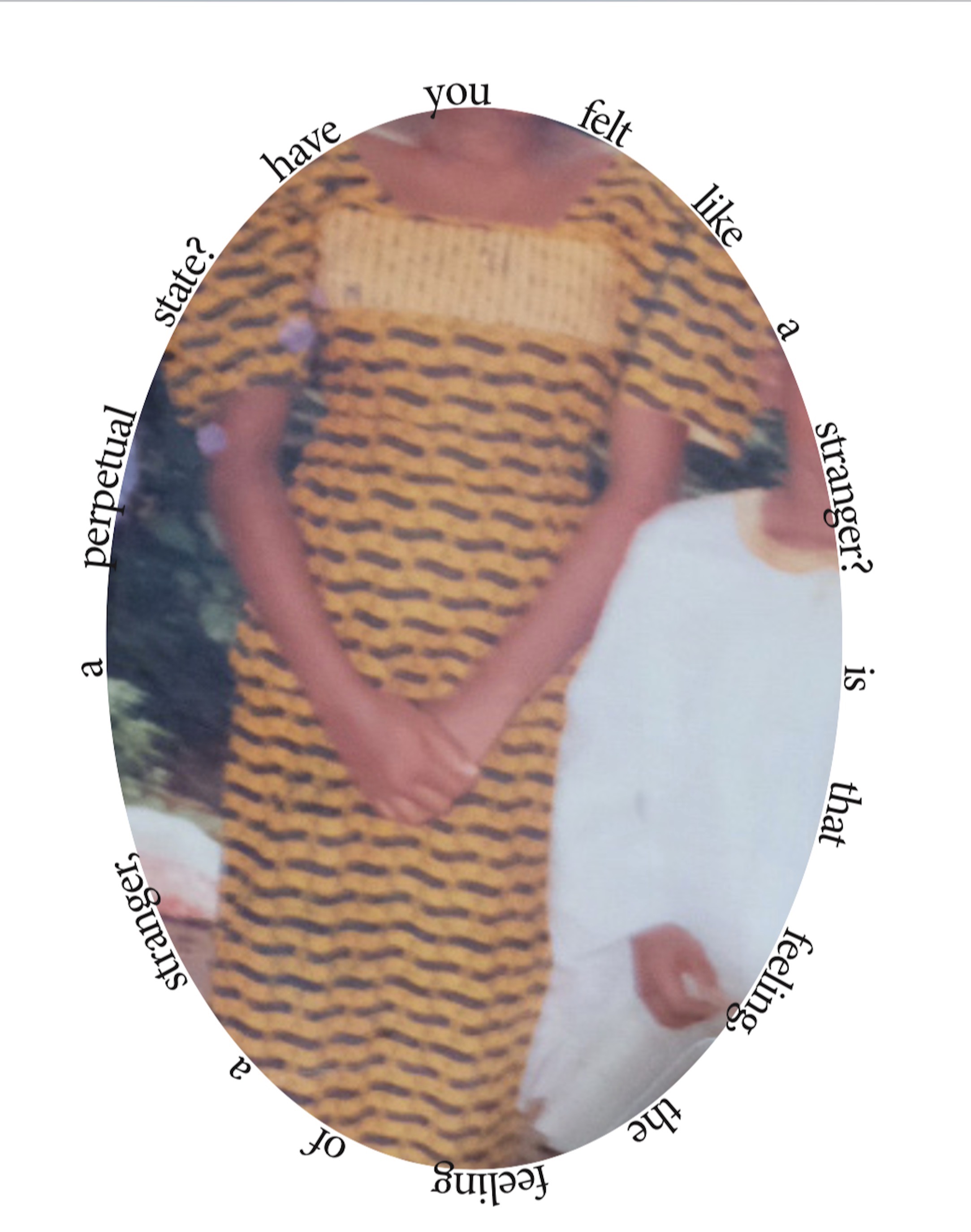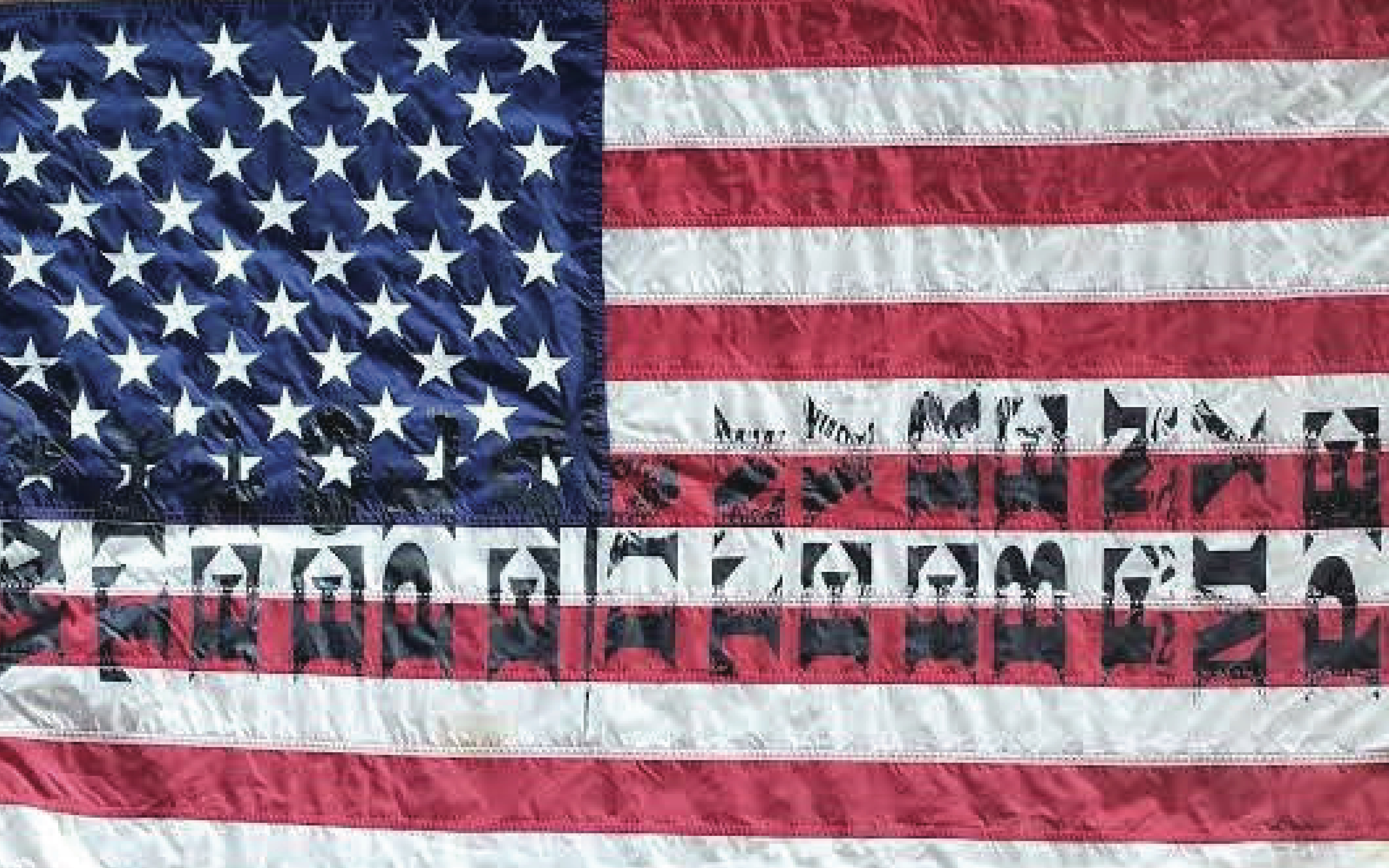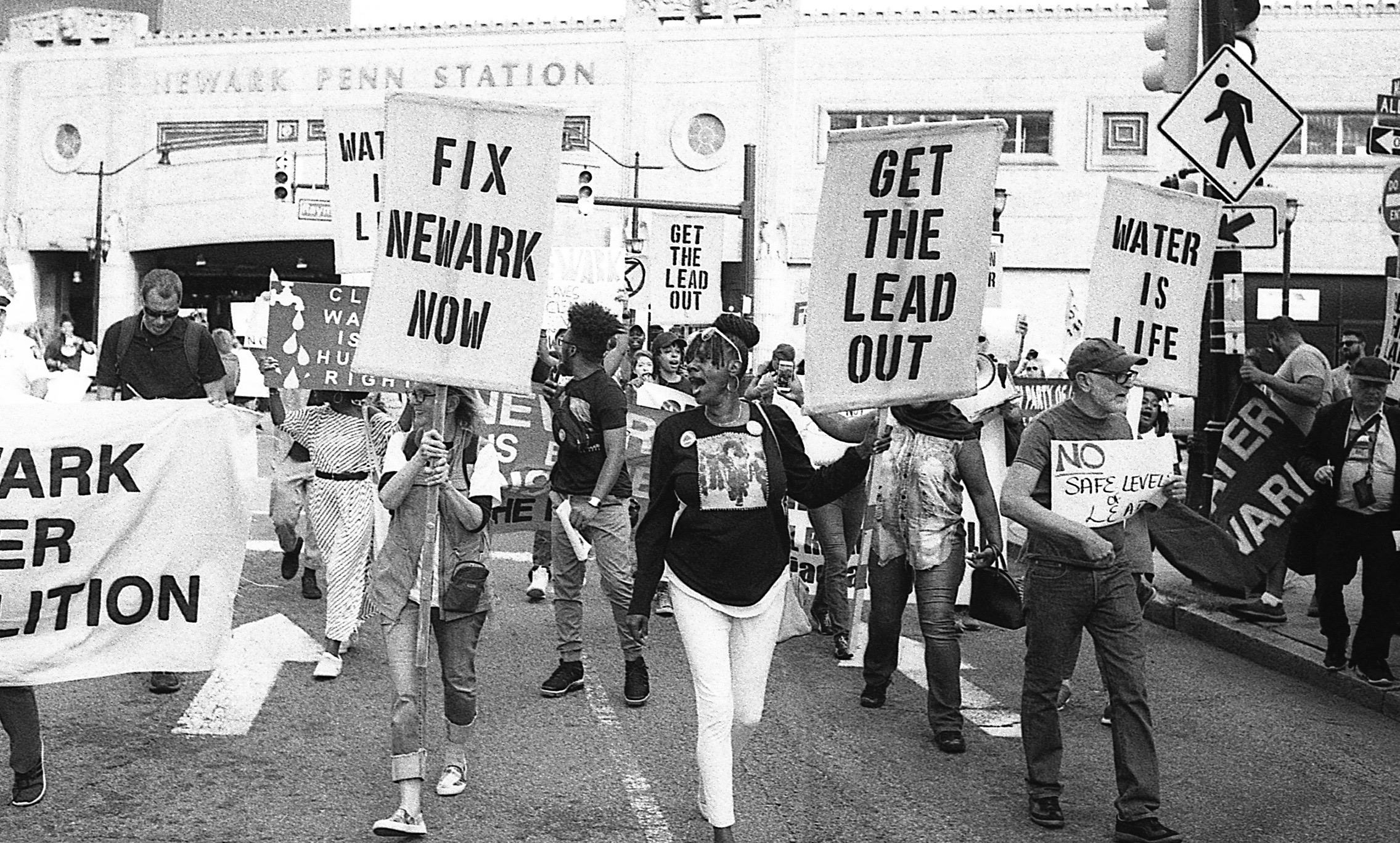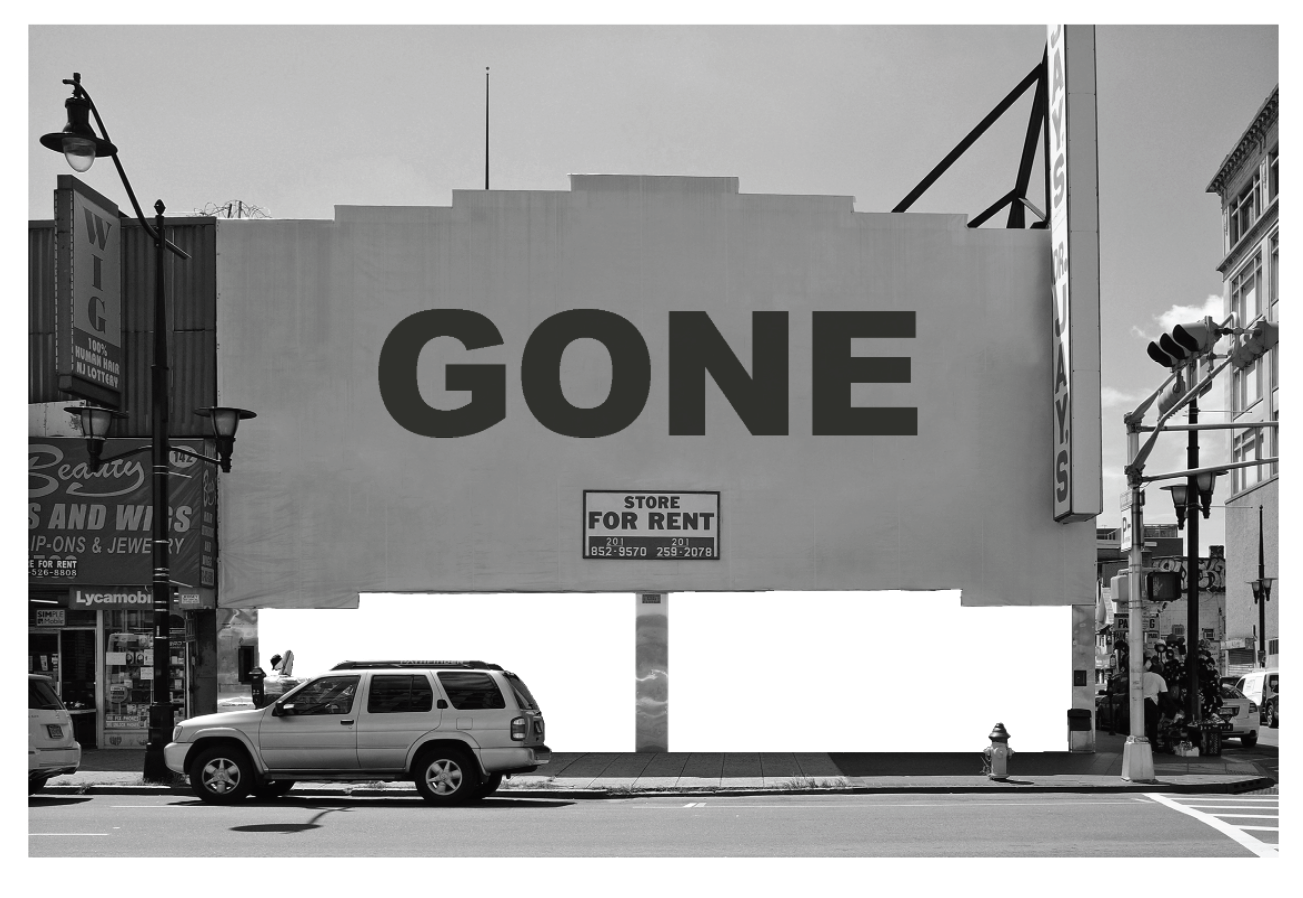"An Ode to Newark" by Alliyah Allen is excerpted from land: reflections on space & power, an upcoming publication from LAND Collective that offers visual and literary stories of migration, policing, protest, water, and gentrification. The publication accompanies a virtual exhibition of the same name that reflects on the question, "what is our relationship to space and how do we define power?" The virtual exhibition launches on December 14th, 2020 until March 15, 2021.
“For me—a writer in the last quarter of the twentieth century, not much more than a hundred years after Emancipation, a writer who is black and woman—the exercise is very different. My job becomes how to rip that veil drawn over ‘proceedings too terrible to relate.’ The exercise is also critical for any person who is black, or who belongs to any marginalized category, for, historically, we were seldom invited to participate in the discourse even when we were its topic. Moving the veil aside requires, therefore, certain things. First of all, I must trust my own recollections. I must also depend on the recollections of others. Thus memory weighs heavily in what I write, in how I begin, and in what I find to be significant… But memories and recollections won’t give me total access to the unwritten interior life of these people. Only the act of the imagination can help me.”
—Toni Morrison, The Site of Memory (1995)
Finding the rhythm of Newark has always been a challenge for me. While I am bonded to Newark by blood, as my father was born and raised here, I lived with my mother up until the sixth grade in Trenton, NJ, so I was often a step behind in my visits and interactions. During one of my weekend visits up North, my sister, cousins, and I decided to go skating Saturday night at Branch Brook Park. This adventure took the entire day to prepare for and we begged my Uncle Kenny to take us shopping for new outfits. When we packed in his car for a night of excitement, I worried about how it would end for me—being that I had only been skating once before. I was a tall, lanky, ten-year-old black girl, who was from Newark, but knew no one there but my family. When we got our skates, my sister and cousins immediately hit the rink and joined their friends from school. Too afraid to go out from my lack of experience, I stood by the wall and soaked in every moment.
As the DJ changed the music in and out from hip hop to what we called club music, the crowd roared, danced, and glided in sync. The laser blinking lights painted a beautiful scene amongst a myriad of laughter, rhythm, and coolness. Desperately wanting to join, I took the risk of skating in a sea of strangers. Failing to find my balance and a familiar face, I paced myself to just a few rounds to experience what it felt like to revel in this newfound flow of black joy. At peace with my findings, uncoordinated, and a bit offbeat, I decided to hop off and just reflect on the excitement.
The party ended, we packed the car to head home, and I left with the strange comfort of feeling like an outsider. On the one hand, I struggled deeply growing up feeling so far removed from a beautiful, talented, and intriguing city. I dreaded the Sunday nights when I had to pack my bags and leave the inspiring and alluring Newark. Yet, I always feared I would never fully appreciate the totality and weight of its greatness if I tried too hard to paint myself permanently into what I saw as a masterpiece.

Growing older and navigating more foreign spaces, including predominantly white institutions such as private boarding schools and college, this memory became more difficult to process. I found my position as an outsider moving further out, as the things that separated me from the larger group morphed into my gender, race, and socioeconomic class. As I stood on the very outskirts of what seemed to be normal, the wavering moments when my ability and value were questioned frequented, leaving me to rely on home for resolve.
In these moments, I chose to see and remember the beauty of Newark. I journey back to the bumping music, rhythm, and style that hooked me to step curiously into the rink. As I recollect the short yet pivotal moment, I feel empowered to transform the moments where I feel like an outsider, into my perspective and voice as a black woman. Now in sync with the vibrational energies resonating throughout the city, I claim my space and power, primarily through my memories and truth built by the force that is Newark.
land: reflections on space & power is an ode to Newark that both honors her people and roots, while calling urgent attention to the dangers that she faces in our current political age. The combination of photography, poetry, design, and writing, embrace a storytelling process that incorporates the positionality of each artist in efforts to highlight the narratives of migration, police presence and surveillance, lack of access to clean water, and gentrification. Collectively, each section is crafted through memories and reflections that speak to these challenges that come along with the city.
bywaters explores the complexities of home, Blackness, and American identity, as mixed-media artist Nene Aïssatou Diallo recollects her family’s migration from Guinea to Newark. Working with family photographs packed for their journey in 2006, Diallo presents these images as portraits with questions that recall names, experiences, and places as frames. Through her collages, cropped images, and narrative text, Diallo unearths the irresolute borders, both interpersonal and physical, that need to be acknowledged when claiming space in new lands that are supposedly open for all. In reintroducing these images and materials, as they now physically exist in Newark,
Diallo honors her maternal home while relying on such memories to confront how home is now lived as a Black immigrant in a major American city. Specifically, in her processing of the murder of Amadou Diallo, the 23-year-old Guinean immigrant who was fatally shot by four New York City Police Officers in February 1999, she shows an awareness that the black body is not accepted or valued in the national social fabric of the United States. She writes, “black in guinea is black here too, but black here is not comfort.” Clearly, Diallo sees her Guinean community, family, and self in this American landscape. However, she reveals a deep discomfort in the means by which such blackness is embodied and lived.

Continuing with this assessment of the Black experience in urban spaces, multidisciplinary artist and scholar, Jillian M. Rock, offers policing Black bodies, a survey of police presence in Newark. Rock begins her piece with a preview of her silkscreen where we the people ain’t never been my people is printed on an American flag. From the start, Rock is unmasking the collective “We the People'' stated in the U.S. Constitution, and places herself apart from the national identity in which she feels she and her people were never included. In her original poem, a space not of my own, Rock situates her readers in the streets of Newark.

Relying on memories, both shared and personal, Rock contests the notion of safety provided by police officers—especially as they physically assert themselves above the locals on horses. Her lyricism draws parallels between the cruelties of slavery and modern-day racism demonstrated in police brutality. She writes, “in this space not of my own/ sounds/ of cracked whips/ on past backs/ are now shoes/ trotting on/ black cement.” Even amidst the lingering effects of institutionalized slavery and racism, Rock ends her poem in action, as she clarifies that the people, who are constantly policed, can, in fact, see—and potentially resist.
Resonating with this spirit of action, photographer Chrystofer Davis’s photo-series, Capturing Resistance, follows the response to the ongoing crisis of lead contamination in Newark’s drinking water. Davis’s images reveal an art of refusal and survival within Newark’s residents. Beginning at Branch Brook Park and the Newark Water Coalition’s distribution center at St. Lucy’s Church, Davis’s reflections in these spaces instill a moral awareness that water is not only sacred but is life. Then, as he travels with crowds of protestors, community members spring into action and demand that city and government officials fix the lead-contaminated pipes.

Capturing Resistance, Chrystofer Davis, 2019
For Davis, the diverse and intergenerational flooding of the streets with loudspeakers, protest signs, and chants affirmed his pride in Newark. However, the longevity and reality of insufficient access to clean water that citizens face unveil a deep sorrow that lingers throughout his home. Navigating this tension between despair and perseverance, Davis’s photographs remind us that the people are alive, present, and committed even in a crisis.
Finally, ruminating on the depths of the neighborhood, graphic designer and printmaker, Gabe Ribeiro, concludes our ode with a reflection in the very mundane aspects of the city. Where do Neighborhoods Go to Die? recognizes the natural ebbs and flow of business, closures, and reopenings in Newark’s Downtown, as Ribeiro positions himself as both a witness and resident. He emphasizes that amongst this flow an “emotional ecosystem” persists and is at risk as developers prowl in the remaking of the city.

Where do Neighborhoods Go to Die? Gabriel Ribeiro, 2020
The juxtaposition of his hand-written entries and design illustrate the erasure of culture, truth, and people that are at stake amidst the disruption that is gentrification. The images with missing details echoes in his journalistic tone that is weary of the grief that will prevail as the city rapidly changes. Yet, what remains—whether it be the rubble of a building, dilapidated storefront, or an image of two young girls playing with their family, beauty and love are the foundations that build the city and are worthy of preservation.
As we end our recollections of Newark, I journey back to my ten-year old self. Reading the city anew through the eyes and hearts of my fellow collective members, I am compelled by their vulnerability and honesty in documenting their truths and shared experiences. Now as my present self, I embrace the color, style, and harmonic flow of images and stories. Fearlessly accepting my part in the makings and history of this city, a deep urgency and commitment to see, believe and appreciate the proud and gleaming city of Newark takes over any doubt of exclusion or erasure. Although an underlying discomfort emerges as we power through the socio-political pitfalls that come with the legacies of racism, misguided power, and discrimination, the possibilities of what Newark can be are endless, especially as we all join in this dance of proclaiming and honoring the truth and power that is Newark.
